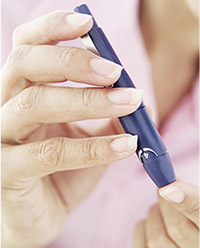Out With the Old, In With the New
Spring is a great time to get rid of old medicines and restock your supplies to treat the common ailments of spring and summer.
Out With the Old
Gather Your Medicines
Begin by gathering your medicines, including prescription, nonprescription, herbals and dietary supplements. Don’t just check the medicine cabinet, but look on kitchen shelves, in the refrigerator, nightstand, purses, wallets, glove compartment or anywhere else you store your medicines.
Have a Brown Bag Session With Your Pharmacist
Dispose of any medicines that are past their expiration date, are no longer used or look like they have deteriorated (i.e., liquids that have crystallized or separated; tablets that smell or look funny). Get rid of unlabeled medicines or those that can’t be identified. Place what is left in a brown bag and set up a time to meet with your pharmacist. Review all your medicines to make sure you are only taking what you need and are using them as prescribed. Have the pharmacist check for possible drug interactions and be advised of potential side effects.
Medicine Disposal
The Food and Drug Administration wants most medicines to be disposed of in the household trash after mixing them with something that tastes bad, like coffee grounds or kitty litter, and sealing in a leak-proof container. Some medicines, such as narcotics, should be flushed because of the danger posed if ingested by a child or pet. Drug take-back programs at your pharmacy or in the community may offer medication disposal services.
Medication Storage
Bathroom cabinets can be the worst place to store medicines since they are unlocked and can be subject to heat and humidity. Store medicine in the original, labeled, light-resistant container, in a cool, dark, dry place. Keep all medicines in a safe place, preferably a locked cabinet, and out of the reach of children or others who would be harmed by them. Some medicines require refrigeration, but don’t allow liquids to freeze.
In With the New
Get ready for spring by stocking up on basic nonprescription items. Everyone in the household should know where they are located.
Fever and mild pain: Non-aspirin pain reliever/fever reducer such as acetaminophen or ibuprofen.
Allergies, hay fever, hives: Non-drowsy antihistamine such as loratadine or cetirizine; if you don’t mind being drowsy, then select diphenhydramine.
Bug bites and itching: Anti-itch cream such as hydrocortisone, diphenhydramine or calamine lotion.
Sunscreen: Water-resistant sunscreen with an SPF of 30 or higher that provides broad-spectrum coverage against both UVA and UVB light.
First-aid kit: Include bandages, gauze pads, tape, antiseptic ointment, scissors, tweezers, antimicrobial soap, towelettes, hand sanitizer, disposable gloves, flashlight, batteries, plastic bags, insulated foil blanket, thermometer, bottled water and other specialty items. Put together different size kits for your car, home, purse, etc.
Many times, especially in the case of an emergency, you’ll need to grab these supplies at a moment’s notice. You’ll be glad you took this time to get everything in order.




 And Other Power Foods >
And Other Power Foods >